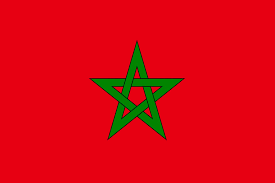Difference between revisions of "Language/Moroccan-arabic/Grammar/Demonstratives"
m (Quick edit) |
m (Quick edit) |
||
| Line 58: | Line 58: | ||
Shokran bzaf! (Thank you very much!) | Shokran bzaf! (Thank you very much!) | ||
<span class='maj'></span> | |||
==Sources== | |||
* [https://polyglotclub.com/wiki/Language/Moroccan-arabic/Grammar/Demonstrative-Adjectives Moroccan-arabic Grammar - Demonstrative Adjectives] | |||
* [https://polyglotclub.com/wiki/Language/Moroccan-arabic/Grammar/Demonstrative-Pronouns Moroccan-arabic Grammar - Demonstrative Pronouns] | |||
{{#seo: | {{#seo: | ||
Revision as of 13:27, 12 March 2023
Welcome to this lesson on how to use demonstrative pronouns in Moroccan Arabic! Demonstrative pronouns are important in any language as they allow you to point out specific things or persons. In this lesson, we will focus on the two types of demonstrative pronouns in Moroccan Arabic, and how to use them correctly.
Demonstrative Pronouns
Demonstrative pronouns, in general, are used to indicate the proximity of a noun to the speaker or the listener. In Moroccan Arabic, there are two types of demonstrative pronouns:
- هَـذَا / haḏā (masculine singular) / هَـاؤُلاَءِ / ha'ula'i (masculine plural)
- هَـذِهِ / haḏihi (feminine singular) / هَـاؤُلاَءِ / ha'ula'i (feminine plural)
Please take note that the demonstrative pronouns for the masculine plural and feminine plural forms are the same.
Demonstrative pronouns usually come before the nouns they describe. They can be used as subjects, objects or even possessives. Here are a few examples of how to use demonstrative pronouns in a sentence:
| Moroccan Arabic | Pronunciation | English |
|---|---|---|
| هَـذَا بَيْتٌ | haḏā baytun | This is a house |
| هَـذِهِ الْفَتَاةُ | haḏihi al-fatātu | This is the girl |
| هَـاؤُلاَءِ الرِّجَالُ | ha'ula'i ar-rijālu | These are the men |
Remember to use the correct form of each demonstrative pronoun according to the gender and number of the noun it describes.
Demonstrative Adjectives
Demonstrative adjectives are used to modify a noun to indicate the proximity of the object to the speaker or listener. They are used in the same way as demonstrative pronouns, except that they come before the noun and must agree with it in gender and number.
In Moroccan Arabic, demonstrative adjectives include:
- هَـذَا / haḏā (masculine singular) / هَـذِهِ / haḏihi (feminine singular) - this
- هَـاؤُلاَءِ / ha'ula'i (masculine and feminine plural) - these
Here are a few examples of sentences using demonstrative adjectives:
| Moroccan Arabic | Pronunciation | English |
|---|---|---|
| هَـذَا الْبَيْتُ كَبِيرٌ | haḏā al-baytou kabiirou | This house is big. |
| هَـذِهِ الْمَرْأَةُ جَمِيلَةٌ | haḏihi al-mar'atou jamilatou | This woman is beautiful. |
| هَـاؤٌلاَءِ الْأَشْيَاءُ رِخْصٌ | ha'ula'i al-ashyā'u rikhsoun | These things are cheap. |
Remember to use the correct form of each demonstrative adjective according to the gender and number of the noun it describes.
Conclusion
Demonstrative pronouns and adjectives are essential when communicating in any language. They allow you to point out specific things or people, thus making the communication clear and concise. In this lesson, we have learned how to use demonstrative pronouns correctly in Moroccan Arabic. We have also learned how to use demonstrative adjectives accurately. With this knowledge, you can now effectively communicate and describe people or things in different situations.
I hope you found this lesson helpful. Keep practicing, and try to use demonstrative pronouns and adjectives as much as possible to become more familiar with them.
Shokran bzaf! (Thank you very much!)
Sources
Related Lessons
- How to use “to be” with adjectives in Moroccan Arabic
- Gender and Plurals
- Reported Speech
- The verb "To work"
- Independent Pronouns
- Demonstrative Adjectives
- Possessive Pronouns
- The verb "To Walk"
- How to use “can” in Moroccan Arabic
- 0 to A1 Course
